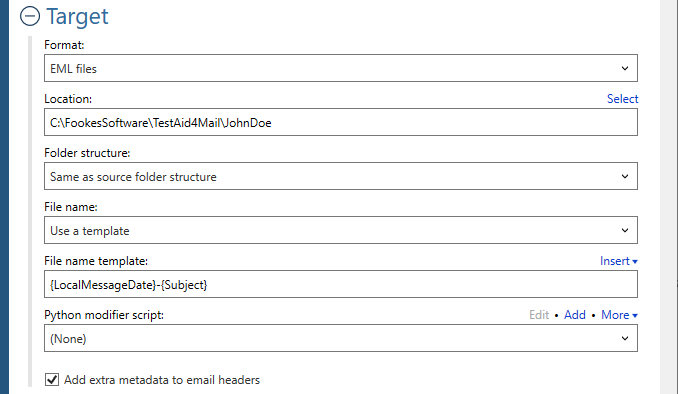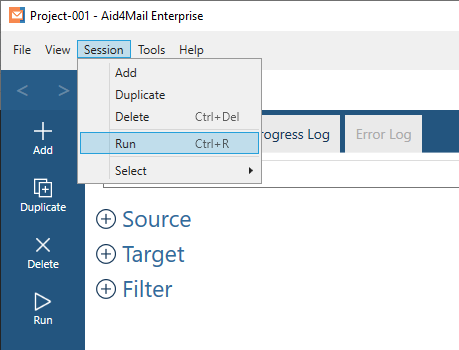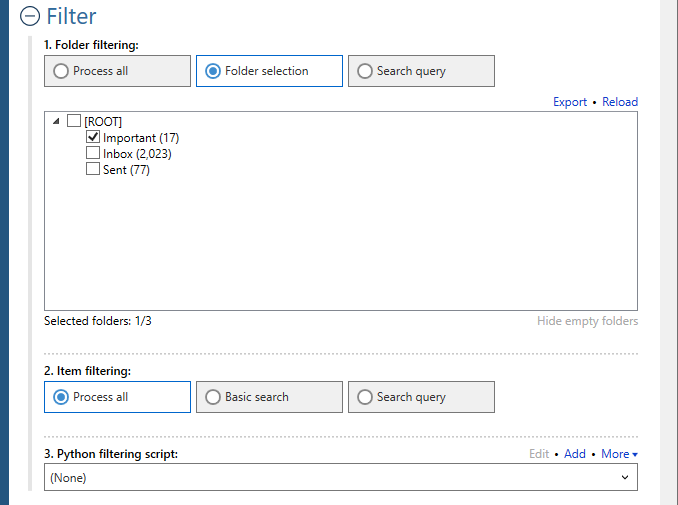Welcome to Fookes Software’s support portal
How to convert MSG to EML (without data loss)
Aid4Mail is the best MSG to EML converter software on the market. Compared to competing tools:
- Aid4Mail is faster.
- More accurate with no data loss.
- Offers more control over the conversion process.
If you don’t have Aid4Mail yet, you can use the free trial version or purchase a low-cost 1-month Aid4Mail Converter license.
Aid4Mail can convert your MSG files with or without Microsoft Outlook installed. However, you will get better performance when Outlook is present and existing email status information (unread, read, replied, flagged, …) will be preserved. Aid4Mail can also faithfully restore your source folder structure.
Please follow the steps below to batch convert MSG files to EML with Aid4Mail. For any setting that’s not specifically mentioned, you can either use the default (preset) value or consult the Aid4Mail User Guide for details. You can open it from Aid4Mail by pressing the F1 key.
Step 1: Open Aid4Mail’s settings

- In Aid4Mail, select the Settings tab.
- Update the Session name to so it describes for the task at hand. In this example, we will be converting John Doe’s MSG files to EML files so we’ve entered John Doe MSG to EML as the session name.
- Below the session name there are three sections: Source, Target and Filter. Each can be displayed or hidden by selecting the +/- symbol next to the section heading. This tutorial requires them all to be displayed.
Step 2: Set MSG files as your source
- In the Format list, select MSG files.
- Choose whether to Process using Outlook. This means using Outlook’s internal engine (MAPI) to collect the MSG files. Using Outlook’s engine is faster, and provides access to more email metadata, but requires Outlook to be installed on the same computer as Aid4Mail. If you don’t have Outlook installed, keep this option off.
- Set the Location of your MSG files, either writing it directly in the field or by using the Select button to browse your file system. Set a single MSG file, or a folder containing MSG files, or a folder whose hierarchy (anywhere below it) contains MSG files. For this example, we’ve set a folder called JohnDoe.
- Choose whether to Remove journaling envelope if your email files are journaled.
Step 3: Set EML files as your target

- In the Format list, select EML files.
- Specify the Location where you want your EML files to be saved. You can write directly in the field or use the Select button to browse your file system.
- Select an option for the Folder structure of the exported mail. Usually you’ll want to keep it the same as the original, so choose Same as source folder structure.
- Determine the criteria for each EML File name. In this example, we have chosen to use a template which we will define in the next step.
- Define your File name template. Templates consist of a combination of text and tokens. The text must not include illegal file name characters. The tokens represent data from the email being processed. You can use the Insert button to help you find and include tokens. We have used a combination of two tokens (separated by a dash) to name each file, representing the local date and the email subject:
{LocalMessageDate}-{Subject}
Step 4: Set your filter (optional)
- Under Folder filtering, pick Folder selection. Your MSG folder structure will appear in the box below.
- Select the folders you want Aid4Mail to process. The others will be skipped.
Step 5: Run your MSG to EML conversion

Select the Run button or Session > Run from the menu. Aid4Mail will convert your chosen MSG files to EML files. It will automatically open the Progress tab so you can monitor what’s going on. Once finished, you will find full reports in the Progress log and, if relevant, the Error log.
That’s it!
We hope you found this tutorial helpful in providing you with information and a tutorial on how to convert .msg to .eml files.
If you’re looking for further information, first take a look through the Aid4Mail user guide and our knowledge base articles.
If you still have questions, don’t hesitate to contact our award-winning Helpdesk.
If you’d like to buy an Aid4Mail license, please visit the online store.
Or if you’d like to try Aid4Mail first before purchasing, download a free trial and run your own tests converting MSG files to EML files. We want you to have full confidence in Aid4Mail!

